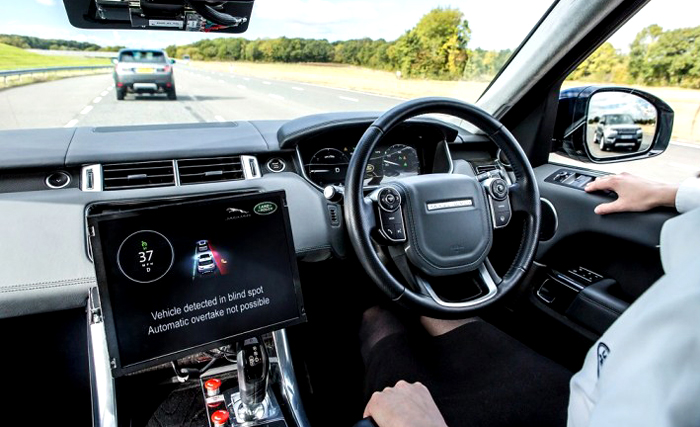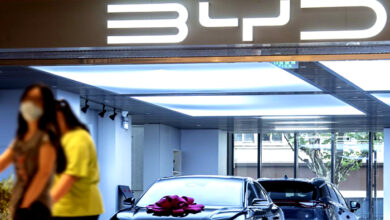Without human help, cars might not be able to drive themselves.

Milton Keynes, England: Autonomous vehicle (AV) startups have raised tens of billions of dollars based on their promises to make truly self-driving cars. However, executives in the industry and experts say that robot drivers may always need remote human supervisors to help them out of trouble.
Most of the research and investment in autonomous vehicles has been based on the idea that computers and artificial intelligence will make accidents caused by human error much less likely.
But there’s a catch: It’s very hard to make robot cars that can drive more safely than people because self-driving software systems can’t predict and judge risk as quickly as people can, especially when they run into unexpected situations called “edge cases.”
When asked if he could see a time when remote human supervisors should be taken out of operations, Kyle Vogt, CEO of General Motors’ (NYSE:GM) Cruise unit, said, “Well, my question would be, “Why? “”
Vogt said, “I can give my customers peace of mind by making sure there is always a real person there to help if they need it.” “I don’t know why I would ever want to throw that away.”
This is the first time Cruise has said that in the long run, humans will need to work from afar.
When asked the same question, Waymo, which is owned by Alphabet (NASDAQ:GOOGL), and Argo, which is backed by Ford Motor (NYSE:F) Co. and Volkswagen AG (OTC:VWAGY), both declined to comment.
After a crash in San Francisco in June that injured two people, GM called back and updated the software in 80 self-driving Cruise cars this month. U.S. safety regulators said that the recalled software could “wrongly predict” the path of an oncoming vehicle. Cruise said that after the update, the strange situation would not happen again.
Related: The 265 km long ‘Drone Super Highway’ project
Some people have more doubts about the technology when they think that human supervisors might be around for a long time.
True self-driving cars are a long way behind the optimistic predictions made just a few years ago.
In 2018, GM tried to get approval from the U.S. government for a fully autonomous car that didn’t have a steering wheel, brake pedals, or accelerator pedals. The car would be used for ride-sharing services starting in 2019. Vogt said that production of that car, the Cruise Origin, won’t start until spring 2023.
Elon Musk, CEO of Tesla (NASDAQ:TSLA), promised a million robotaxis “next year for sure” in 2019. However, his company’s “Full Self Driving” service has been criticised because its cars can’t drive themselves without a person in the driver’s seat who is ready to take manual control in an emergency.
Musk said in a June YouTube interview that making self-driving cars was “way harder than I thought at first.” But when he was asked how long it would take, he said “this year.”
When asked for comment on this story, Tesla did not answer.
The promise of true autonomy that hasn’t been kept has made the AV industry’s goals more important.
Mike Wagner, CEO of Edge Case Research, which helps AV companies assess, manage, and insure risk, said, “If these companies don’t succeed in the next two years, they won’t exist anymore.” “At this point, you need to speak up or shut up.”
Remote human watching
Many startups in the area of autonomous vehicles (AVs) use humans as remote supervisors and also have safety drivers behind the wheel.
These remote people are an extra cost, but they help self-driving cars handle unusual situations. These could be as simple as a new set of lane closures during road work or the strange, unpredictable behaviour of pedestrians or human drivers.
When a robot driver comes across an edge case, “it puts its hands up and says, ‘I don’t know what’s going on,'” said Koosha Kaveh, CEO of Imperium Drive. Imperium Drive is a company in the English city of Milton Keynes that uses humans as remote operators for cars. Over time, these people will be like “air traffic controllers” and watch over an increasing number of self-driving cars.
Vogt from Cruise says that the company’s self-driving cars on the streets of San Francisco depend on people less than 1% of the time. But if hundreds, thousands, or even millions of AVS did this, it would add up to a lot of time spent waiting on the road for people to tell them what to do.
Kaveh from Imperium Drive said, “You will never get to zero edge cases because self-driving cars are more predictable than humans.”
“Even in a few decades, you won’t have 100% fully autonomous cars,” Kaveh said.
Related: Fake Google Translate instals crypto miners on 112,000 machines.
Still, there is more competition. Some Chinese cities want to be able to test active AVs faster.
Investor funding for self-driving cars has dropped, which has made it more important to deal with edge cases and cut costs for everything from sensors to the number of people in the loop.
Investors aren’t sure how soon businesses that run on their own will start making money, which has led to some doubt. Autonomous vehicles that are simpler or move more slowly, like trucks or last-mile delivery services that run on highways or set, low-speed routes, are likely to make money first, but it will still take years to get there.
Overall investment in future mobility startups has slowed. AV-focused companies have been hit especially hard, with less than 10% of venture capital investments in the second quarter going to them. (Graphic: http://tmsnrt.rs/3Rzy04y)
In 2022, funding for mobility technology will drop. https://graphics.reuters.com/autos-autonomous/technology/egvbkradkpq/chart.png
During the last quarter, $958 million less was put into AV startups. Just two years ago, investment in autonomous vehicles (AVs) was booming. Alphabet’s Waymo raised $3 billion, Didi’s AV unit raised $500 million, and Amazon bought AV startup Zoox for $1.3 billion, according to PitchBook.
“RUN TO THE MARKET”
Autonomous systems are not as smart as people because their “perception and prediction algorithms are not as good as how a human brain processes and decides,” said Chris Borroni-Bird, an independent consultant who used to lead advanced vehicle programmes at GM and Waymo.
Borroni-Bird said that if a person sees a ball roll into the road, which is harmless on its own, they will think a child might be following it and hit the brakes much faster than an AV would.
“I’m worried that companies that make self-driving cars will rush to market before they can prove that they are safer than cars driven by people,” he said.
The problem is that there are “tens of billions of possible edge cases” that AVs could run into, said James Routh, CEO of AB Dynamics, which tests and simulates cars, including the advanced driver-assistance systems (ADAS) that are the basis of autonomous driving features.
Sarah Larner, executive vice president for strategy and innovation at Wejo Group Ltd., said that the company gets 18 billion data points from millions of connected cars every day, which helps with simulations for autonomous vehicles (AVs).
Related: Central to the pursuit of active, vigorous ageing are zombie cells.
“But there are so many things that can go wrong, like the weather, that you can take a corner case and then have to add all the different possibilities,” she said. “It really is a million outputs.”
DRIVERLESS DELIVERY
AB Dynamics tests cars on a track with a robot arm that it plans to put on slow-moving mining and farm trucks to make them mostly self-driving.
Routh imagines a remote group of people keeping an eye on fleets of self-driving mining trucks or other vehicles that work in closed environments.
He doesn’t think that plan would work for vehicles in faster, more open environments, where it might be hard for human supervisors to respond quickly enough to dangers from far away.
Within the next year, the British online food delivery and technology company Ocado (LON:OCDO) Group Plc will launch a small fleet of driverless delivery vehicles with the help of the autonomous vehicle software startup Oxbotica. These vehicles will be supervised by humans from afar and will only operate on a few streets and set routes in a small UK city, never going faster than 30 miles per hour (48 km/h).
Alex Harvey, head of advanced technology at Ocado, said, “If a car is going 30 miles per hour and starts to panic, it can hit the emergency brake and call for help.” “This seems like a very good plan when moving slowly.”
“But you can’t play that game on a highway,” Harvey said. “Hard stops at the edge of the road would be dangerous.”
Harvey said it would take Ocado about five years to make a driverless delivery system that makes money. He said that AVs going no faster than 40 mph could reach more than half of Ocado’s UK customers. In the long run, the service could be made available to Ocado customers like Kroger (NYSE:KR) Co.





